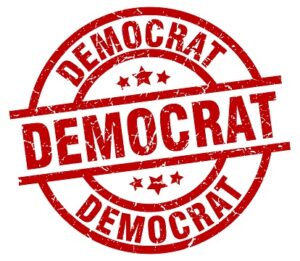The Shifting Sands of American Political Economy: A Historical Perspective on the Democrats

In the world of American politics, the undercurrents can shift dramatically, shaping the landscape in ways that few anticipate. The upcoming 2024 election was predicted to be a historic landslide, and while some voices dared to suggest the possibility of a Democratic collapse, mainstream discourse largely overlooked this potentiality. At Extreme Investor Network, we strive to offer you insights rooted in historical patterns, forensic economic analysis, and impartial predictions that cut through the noise.
The Democratic Party’s Historical Arc
Reflecting on the past, it’s essential to perceive how the Democratic Party has navigated through crises. Historically, it has faced multiple existential threats, often realigning itself at the crossroads of economic upheaval. A significant moment came before the Civil War, setting the stage for a party fracturing over states’ rights and slavery—issues that still resonate today. The blue line on our charts tells a story of peaks before major societal shifts: the Panic of 1873 and the Panic of 1893, both critical points where the Democratic party faced fierce political backlash due to its financial policies.

During the Long Depression (1873-1899), the Democratic Party’s overvaluation of silver led America down a path of economic turmoil. This period saw the rise of the Sherman Anti-Trust Act, an effort to regulate corporate monopolies that diminished the workforce. The implications were profound, calling into question the party’s commitment to economic stability.
The March Toward Marxism
Our examination continues with Coxey’s Army, a major protest that emerged in response to the Panic of 1893, effectively painting a vivid picture of public discontent. The demands of the protesters ignited a growing sentiment for government intervention in job creation, which would later be co-opted by Franklin D. Roosevelt as he championed the New Deal. This historical thread weaves into the narrative fabric of the Democratic Party, revealing how past crises shape present policies and ideologies.

Shifting Ideologies: From Silver to Socialism
With political ideology as the backdrop, we see how FDR transformed the party through a radical shift away from previous monetary policies. The government’s response to economic crises was often framed within the overarching narrative of social equity, pushing for job creation through initiatives like the Works Progress Administration (WPA). The WPA was critical during the Great Depression, helping millions regain employment while constructing essential infrastructure.
However, there’s a caveat: the abandonment of the gold standard in favor of policies tethered to an evolving economic context led to significant implications in America’s fiscal health. As we delved into the implications of these decisions, we noted how they set the stage for modern-day economic challenges.
The Echoes of History in Today’s Political Landscape
Today’s Democratic Party grapples with a complex legacy as it confronts the fragmentation within its ranks. The shift toward a “WOKE” agenda can be likened to the past cycles of ideological shifts in pursuit of electoral success. The storm brewing within the party’s architecture echoes earlier times of party realignment, with many members looking for alternative narratives that align with their values.

At Extreme Investor Network, we stress the importance of understanding these historical patterns to predict future outcomes. Just as major economic events have redefined party ideologies in the past, today’s catalysts—be it social justice movements or fiscal mismanagement—carry the potential to reshape political allegiances and informed responses to imminent economic crises.
Looking Ahead
As we peer into 2024, the potential for another transformative cycle looms large. Will the Democrats abandon the ideals that have once defined them, just as they did in response to the monetary debates of the past? Or will resilience prevail, allowing them to harness the lessons learned through generations of economic fluctuation?
In conclusion, understanding the historical trajectory of the Democratic Party equips us to better navigate the present political climate and its implications for the economy. We invite you to join us at Extreme Investor Network as we explore these themes further, helping you make sense of the ongoing changes in the landscape of American political economy.
Stay informed, stay savvy, and prepare for the winds of change.
This revised blog format synthesizes unique insights from historical events while positioning Extreme Investor Network as a thought leader in navigating the interplay between economics and political shifts.

